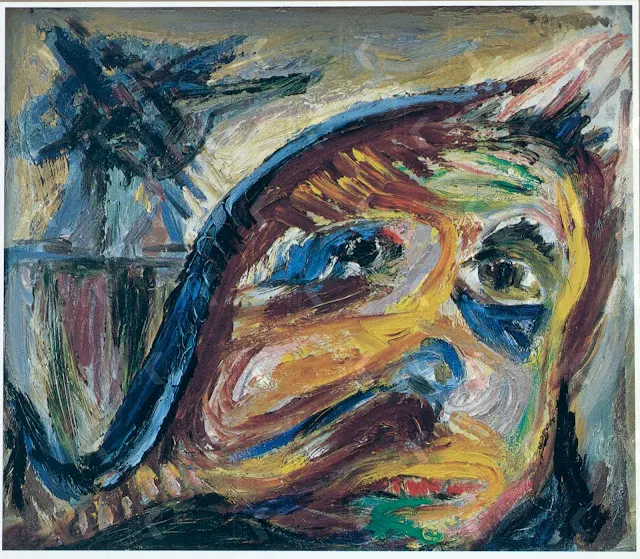A journey through chaos, politics, and cultural vandalism
Asger Oluf Jørgensen (1914–1973), known as Asger Jorn, was more than a painter, he was a cultural provocateur. Born in Vejrum, Denmark, Jorn became a leading force in 20th-century art by rejecting tradition and embracing radical expressionism on his own terms.
 |
| Jorn Asger - Paris by Night |
From Fernand Léger to Cultural Dissident
In 1936, Jorn studied under Fernand Léger in Paris, where he moved away from figurative painting toward abstraction. After World War II, he co-founded the avant‑garde CoBrA movement in 1948 and was a founding member of the Situationist International in 1957. Jorn didn’t just paint, he attacked the status quo, using art as a tool for both aesthetic and political revolt.
 |
| Jorn Asger - Letter to my son |
Stalingrad: Painting as Protest
Jorn’s monumental canvas Stalingrad (started in 1956 and completed in 1972) remains one of Denmark’s most iconic works. The chaotic composition, nearly 3 × 5 meters, conveys the futility and horror of war, abstract yet deeply affecting. It’s a visual outcry against destruction, included in the Danish cultural canon
 |
| Jorn Asger - Kyotosmorama |
Institute of Comparative Vandalism
In 1961, Jorn founded the Scandinavian Institute for Comparative Vandalism, alongside scholars and photographers who documented centuries of folk and medieval art across Europe. This initiative sought to elevate vernacular aesthetics and challenge elitist cultural hierarchies, vandalism not as destruction, but as rediscovery.
 |
| Jorn Asger - Jungle Drama |
The Legacy of a Cultural Rebel
Jorn wrote extensively, developed a philosophy known as “triolectics,” and remained a fierce critic of institutional authority, even refusing the Guggenheim Prize in 1964 with a telegram condemning artistic commodification. He transformed the role of the artist from creator to agitator, blending creativity with critique.
 |
| Jorn Asger - Fugitive and Dutch windmill |








%20at%20Pen%20and%20Brush..png)

.jpg)
No comments:
Post a Comment